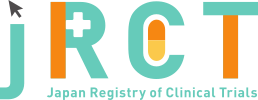臨床研究等提出・公開システム
|
June. 29, 2021 |
|
|
July. 17, 2024 |
|
|
jRCT2031210170 |
A Randomized, Double-Blind, Placebo-Controlled, Multicenter, Dose-Ranging, Phase 2b Study to Evaluate Efficacy and Safety of Tezepelumab for the Treatment of Chronic Spontaneous Urticaria |
|
Study to Evaluate Tezepelumab in Adults With Chronic Spontaneous Urticaria |
|
April. 13, 2023 |
|
183 |
|
Sex: 134 women (73.2 %) and 49 men (26.8 %). Age: mean (SD) = 42.9 (14.5) years. Race: 114 White (62.3 %), 60 Asian (32.8 %), 7 Black (3.8 %), 1 Multiple (0.5 %), 1 other (0.5 %). Ethnicity: 169 Not Hispanic/Latino (92.3 %), 14 Hispanic/Latino (7.7 %). |
|
183 subjects were enrolled and randomized to treatment groups: placebo (48 subjects), omalizumab (31 subjects), tezepelumab 210 mg (52 subjects), and tezepelumab 420 mg (52 subjects). A total of 165 subjects (90.2%) completed the study. Eighteen subjects (9.8%) discontinued the study: withdrawal of consent from study (9 [4.9%]), lost to follow-up (5 [2.7%]), protocol-specified criteria (3 [1.6%]), and decision by sponsor (1 [0.5%]). |
|
The subject incidence of treatment-emergent adverse events (hereafter referred to as adverse events) in the placebo, omalizumab, tezepelumab 210 mg, and tezepelumab 420 mg was 23 (47.9 %), 24 (77.4 %), 29 (55.8 %), and 28 (53.8 %), respectively. The subject incidence of adverse events was highest in omalizumab group. Adverse events by preferred term (PT) reported for >= 10 % of subjects in any treatment group were as follows: - COVID-19: 3 (6.3 %), 2 (6.5 %), 8 (15.4 %), and 5 (9.6 %) - Headache: 2 (4.2 %), 1 (3.2 %), 5 (9.6 %), and 6 (11.5 %) No subjects had fatal adverse events during the study. One subject (3.2%) in the omalizumab group (2 events of intentional self-injury) and 1 subject (1.9%) in the tezepelumab 210 mg group (1 event of acute lymphocytic leukemia) had serious adverse events. |
|
1. Primary Outcome The improvement in UAS7 from baseline in both the tezepelumab groups was not statistically significant compared with placebo at week 16, whereas the improvement in both tezepelumab groups was numerically higher than placebo at week 32. The (least squares mean [LSM] [SE] of change from baseline) (tezepelumab 210 mg and 420 mg, and placebo, respectively) were as follows: - week 16: (-13.5 [1.6], -14.7 [1.5], -13.6 [1.6]) 2. Secondary Outcome In the overall population, numerical improvement from baseline in most secondary efficacy endpoints was observed in both tezepelumab groups at week 16, but there was no statistically significant difference from placebo. In addition to the secondary endpoints, the additional important finding at the time of the final analysis in the study was that tezepelumab groups continued to show improvement in the continuous secondary efficacy endpoints and most of the binary secondary efficacy endpoints until the EOS at week 32 without treatment (tezepelumab was administered up to week 16). The sustained treatment effect with tezepelumab at week 32 was observed for both tezepelumab doses. |
|
- The improvement in UAS7 from baseline in both the tezepelumab groups was not statistically significant compared with placebo at week 16 in the overall (p > 0.05). - The incidence of all adverse events was higher in omalizumab group compared with the tezepelumab groups and the placebo group for the overall population. The incidence of SAEs, those leading to discontinuation of investigational product, severe adverse events, and EOIs was generally similar between the treatment groups. |
|
Yes |
|
De-identified individual patient data for variables necessary to address the specific research question in an approved data sharing request. |
|
https://jrct.mhlw.go.jp/latest-detail/jRCT2031210170 |
Kimura Takeshi |
||
Amgen K.K. |
||
Midtown Tower 9-7-1 Akasaka, Minato-ku, Tokyo |
||
+81-80-7217-8592 |
||
clinicaltrials_japan@amgen.com |
||
Contact Local |
||
Amgen K.K. |
||
Midtown Tower 9-7-1 Akasaka, Minato-ku, Tokyo |
||
+81-80-7217-8592 |
||
clinicaltrials_japan@amgen.com |
Complete |
April. 15, 2021 |
||
| April. 15, 2021 | ||
| 159 | ||
Interventional |
||
randomized controlled trial |
||
double blind |
||
placebo control |
||
parallel assignment |
||
treatment purpose |
||
1. Signed informed consent must be obtained prior to participation in the study. |
||
Disease related, including but not limited to: |
||
| 18age old over | ||
| 80age old under | ||
Both |
||
Chronic Spontaneous Urticaria |
||
- Biological: Tezepelumab Dose 1 |
||
Change from Baseline in Urticaria Activity Score over 7 days (UAS7) at Week 16 [ Time Frame: Baseline and Week 16 ] |
||
1. Change From Baseline in ISS Over 7 Days (ISS7) at Week 16 [Time Frame: Baseline and Week 16] |
||
| Amgen K.K. |
| Sugiura Clinic Institutional Review Board | |
| 4-4-16-301, Honcho, Kawaguchi-shi, Saitama | |
+81-42-648-5551 |
|
| sugiura-irb@eps.co.jp | |
| Approval | |
Jan. 21, 2021 |
| NCT04833855 | |
| ClinicalTrials.gov |
United States/Canada/France/Germany/Greece/Italy/Korea/Poland/Spain |
